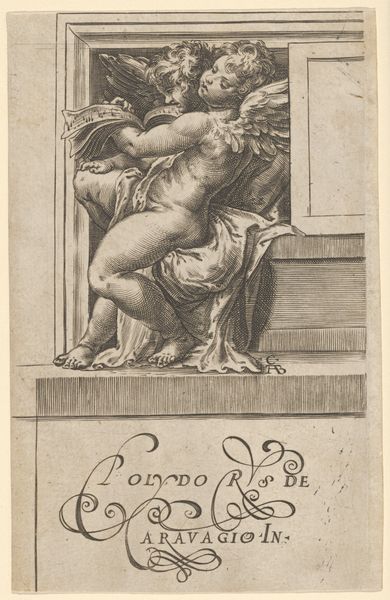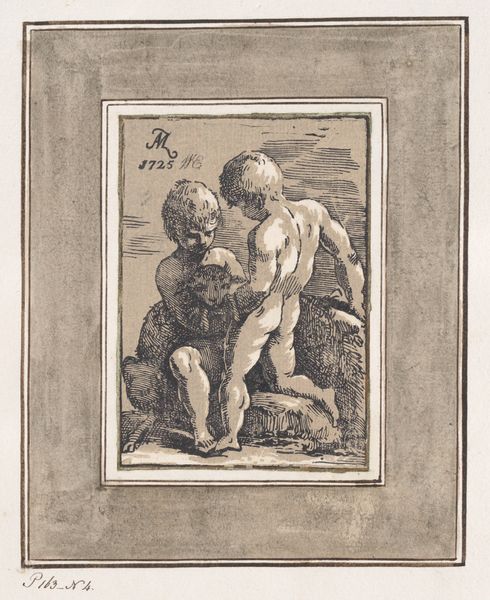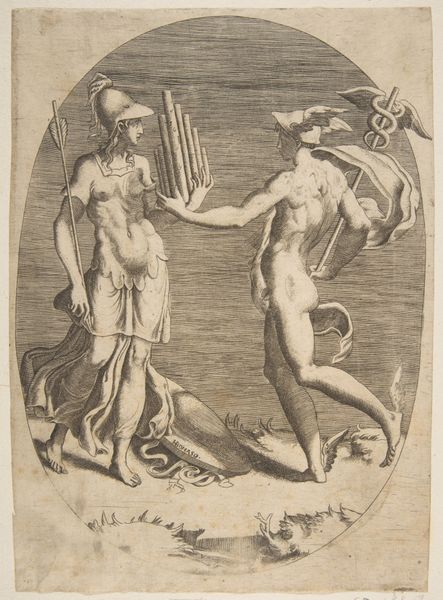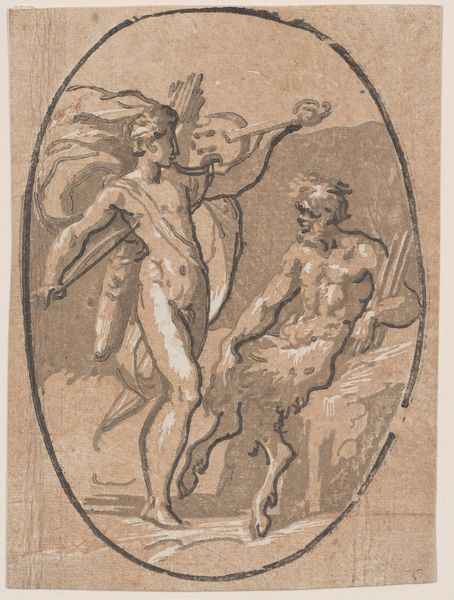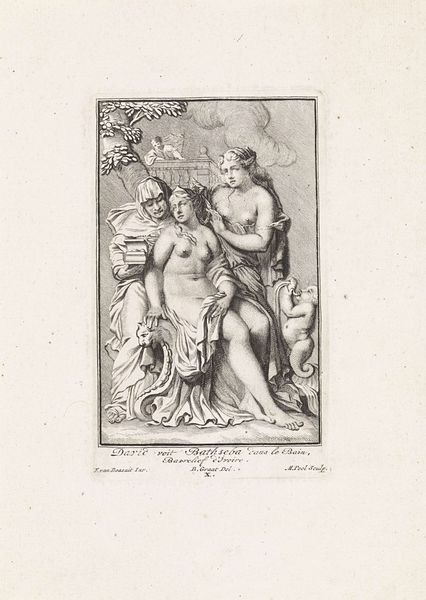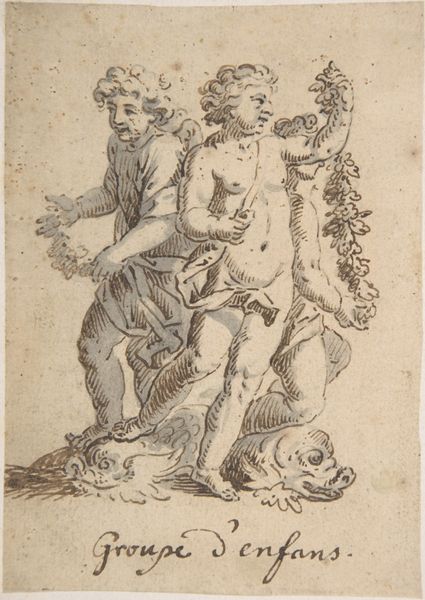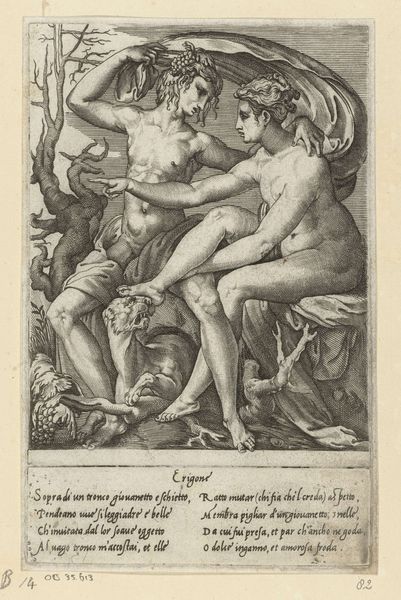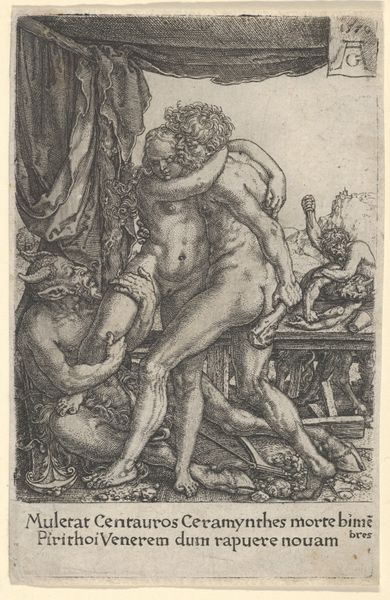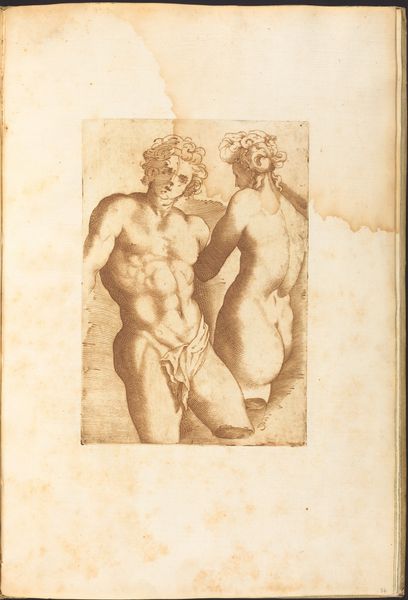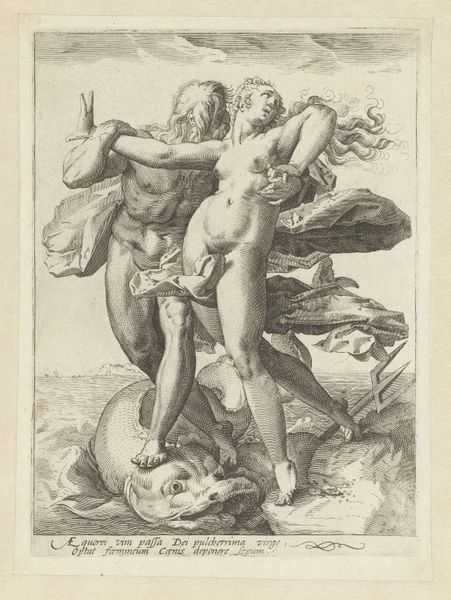
drawing, print, engraving
#
drawing
#
allegory
#
baroque
# print
#
figuration
#
female-nude
#
history-painting
#
nude
#
engraving
#
male-nude
Dimensions: sheet: 7 1/2 x 5 11/16 in. (19 x 14.5 cm)
Copyright: Public Domain
Editor: Here we have Peter Schmidt von Lichtenberg's "Allegory of Art," created in 1609. It's an engraving, and its sepia tones and the figures' poses give it a very classical feel. What can you tell me about it? Curator: The figures certainly recall classical ideals, yet, like all allegories, it's less about the specific figures and more about the abstract ideas they represent. See how one figure holds what looks to be a candle aloft? It's less about illumination in the literal sense, but about enlightenment and the guiding principles behind art. How do you interpret the relationship between the two figures? Editor: It feels like guidance, almost like the figure standing is showing the seated one something. The standing figure is draped, but the other is nude and seems contemplative. Curator: Indeed. Consider how artists often used the nude form to represent idealized beauty and truth, central tenets within the Baroque aesthetic. This "Allegory of Art," then, isn't simply a depiction of art, but an invocation of the grand, almost divine role ascribed to it in this period. Does that heightened symbolic register resonate with you? Editor: Definitely. I see how it speaks to a grander, more elevated idea of what art *should* be, reflecting certain ideals. Curator: Precisely! And even today, allegories, while perhaps less overtly present, subtly shape how we assign meaning and value within artistic representations, continually evoking culturally embedded ideals. Editor: It's interesting how this engraving, on the surface a classical scene, uses symbolic language to establish a clear hierarchy of artistic and intellectual values. Curator: Absolutely, it reminds us that every image carries a lineage of cultural memory.
Comments
No comments
Be the first to comment and join the conversation on the ultimate creative platform.
